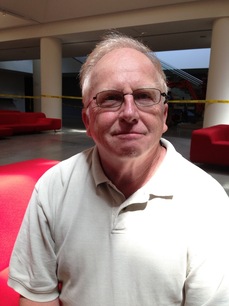By Doug Struck
Globe Correspondent
Jim Laurie figures he’s heard the solution to climate change: bring on the cows. Or sheep. Or just about any grazing animals.
Laurie is a proponent of a method of restoring exhausted land that is causing a stir—if not yet an avalanche—of interest among ranchers, farmers and environmentalists. It involves bringing livestock onto spent and unproductive land for a short tour of munching—maybe a day, a few days, or a week. If there’s not enough to eat, bring feed to them, he says.
 What the animals leave behind in droppings in a relatively short time can dramatically restore land that modern agriculture had given up for dead. And in the process, the new grasses that sprout on the land can suck up carbon dioxide from our greenhouse gas-saturated atmosphere.
What the animals leave behind in droppings in a relatively short time can dramatically restore land that modern agriculture had given up for dead. And in the process, the new grasses that sprout on the land can suck up carbon dioxide from our greenhouse gas-saturated atmosphere.
“If you can make soil, you can end global warming,” says Laurie, a Woburn, Ma., biologist and “restoration ecologist.” He notes if we put back a quarter of the carbon lost from the soil, we could reduce C02 levels in the atmosphere from the present 400 parts per million to 300 parts per million.*
“We’d be talking about going back to the Ice Age.”
This is the theory espoused by Allan Savory, a Rhodesian biologist who has become aTED Talk star with his vision of the future and his mea culpa. His regrets, Savory says in the lectures he gives around the world, are that as a game preserve biologist in what is now Zimbabwe he helped advocate the killing of 40,000 elephants in a government program to reduce destruction of farmlands from overgrazing.
Savory now says that culling was exactly the wrong approach. Without animals to disrupt the soil and fertilize it, farmlands, prairies and grasslands die. His “holistic management” approach is to let animals graze on land for short periods and then move them on, as they did naturally, before fences. Microbes, dung beetles and worms go to work, converting the animal manure to new soil—humus that holds water, loosens the ground and fosters natural grasses.
When Laurie heard this theory, it fit in well with his previous interests as a biologist and chemist who has worked in a half-dozen spots around the country to try to bring natural processes to bear on problems ranging from cleansing toxic water to growing redwoods.
Laurie now approaches the topic in talks around New England armed with slides of startling improvements—showing dry, cracked lands becoming fields of natural grass—that are the result of the method. The most dramatic improvement in the United States are in the grasslands of the West, he says.
“Grasslands need animals. And animals need grasslands,” he says. “Ruminants in the billions have lived on the planet for ages.” Now that we have removed and restricted those animals, we have produced swaths of brittle land, quickly becoming desertifed.
Like Savory, Laurie has found his message generates interest. Ranchers and farmers who are trying it are adding to a growing cadre of believers, he says. But Savory’s theories have critics, who say that his experimental trials are unscientific and the benefits unproven. And an age-old belief that grazing animals kill the ground is hard to put down. Laurie mostly shrugs them off; he has seen the proof with his own eyes, he says.
“There’s this idea that the soil will grow back if you take all the animals away,” he says. “But grasslands want to be grazed. Where you have a grazing plan, things get better.”
